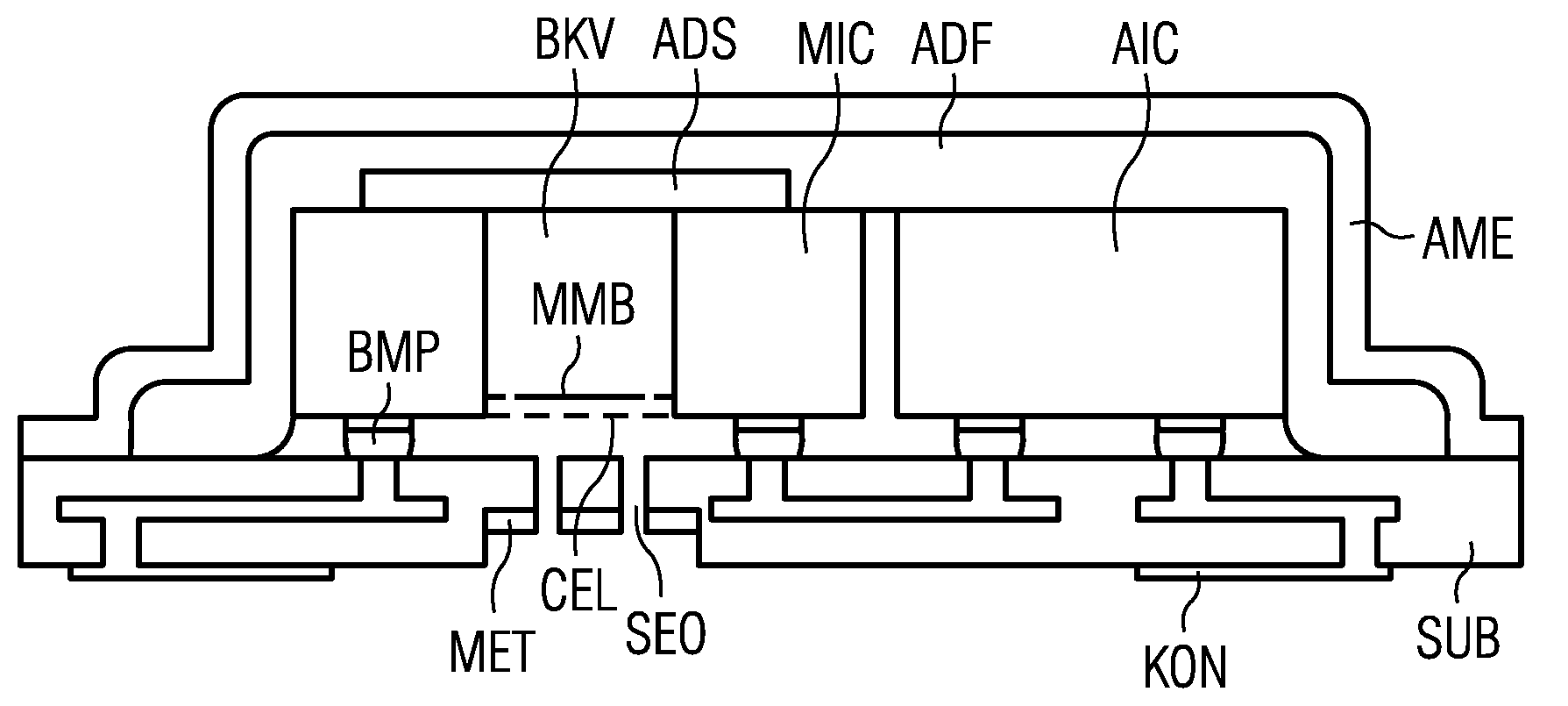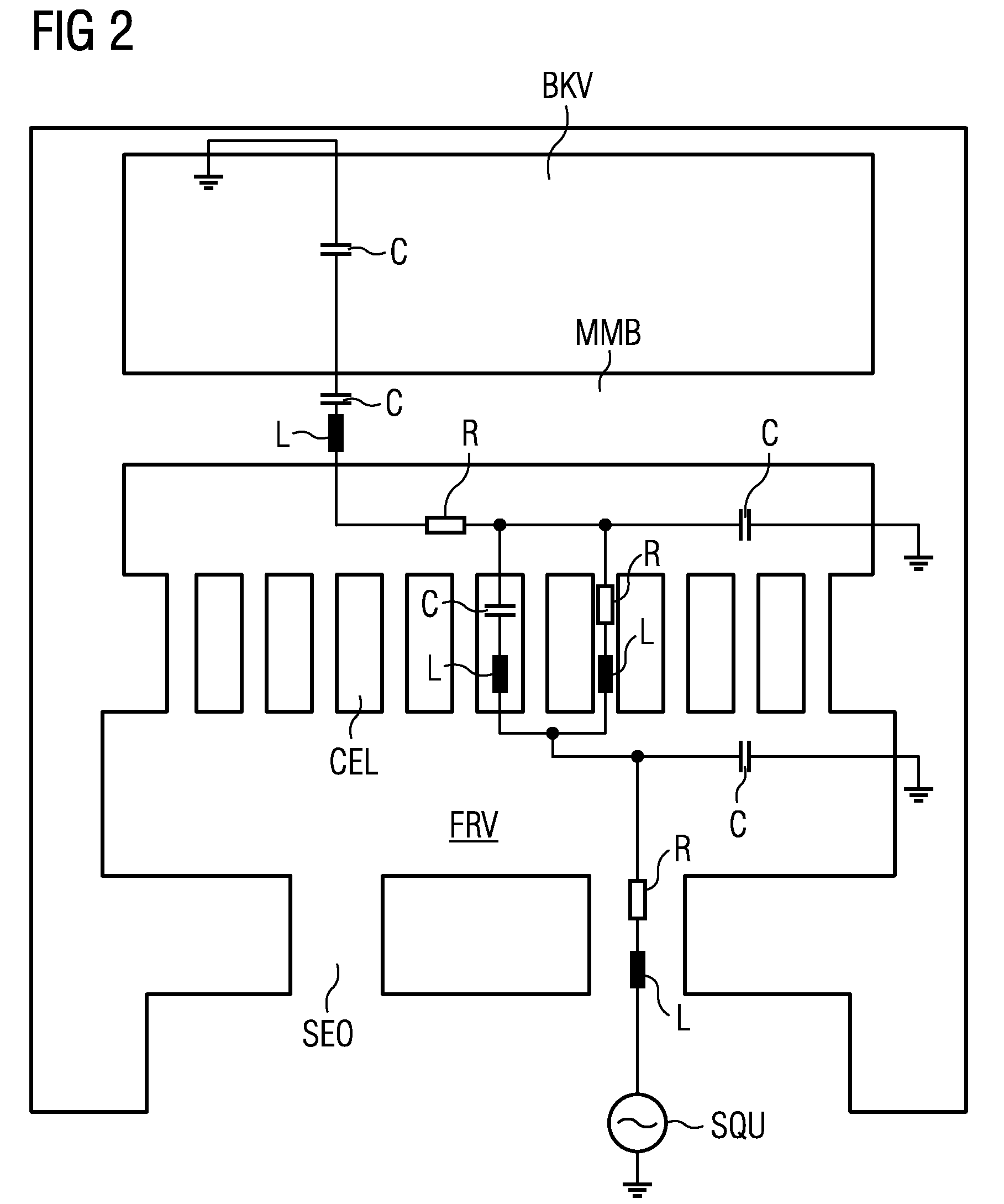MEMS microphone
a microphone and membrane technology, applied in the field ofmems microphones, can solve the problems of low mechanical stability, high susceptibility of membrane, and the miniaturization of mems microphones, and achieve the effect of avoiding contamination or damage to the membrane of the microphon
- Summary
- Abstract
- Description
- Claims
- Application Information
AI Technical Summary
Benefits of technology
Problems solved by technology
Method used
Image
Examples
Embodiment Construction
[0042]FIG. 1 shows the simplest possible construction of a microphone package according to the invention on the basis of a schematic cross section. The microphone chip MIC is embodied as an MEMS component composed of a crystalline material, in particular composed of crystalline silicon. With the aid of its downwardly facing contacts, it is mounted on a substrate SUB by means of bumps BMP and is also electrically contact-connected via the bumps.
[0043]The microchip MIC operates, for example, according to the capacitive principle and, for this purpose, has a membrane MMB at a small distance from a rigid counterelectrode CEL, which are both arranged at the downwardly facing surface of the microphone chip. Above / behind the membrane there is a cutout BKV, which is produced for the purpose of exposing the membrane, for example by means of etching from the top side. Arranged below / in front of the membrane, but with a reduced cross section with respect to the membrane area, there is a sound ...
PUM
 Login to View More
Login to View More Abstract
Description
Claims
Application Information
 Login to View More
Login to View More - R&D
- Intellectual Property
- Life Sciences
- Materials
- Tech Scout
- Unparalleled Data Quality
- Higher Quality Content
- 60% Fewer Hallucinations
Browse by: Latest US Patents, China's latest patents, Technical Efficacy Thesaurus, Application Domain, Technology Topic, Popular Technical Reports.
© 2025 PatSnap. All rights reserved.Legal|Privacy policy|Modern Slavery Act Transparency Statement|Sitemap|About US| Contact US: help@patsnap.com



